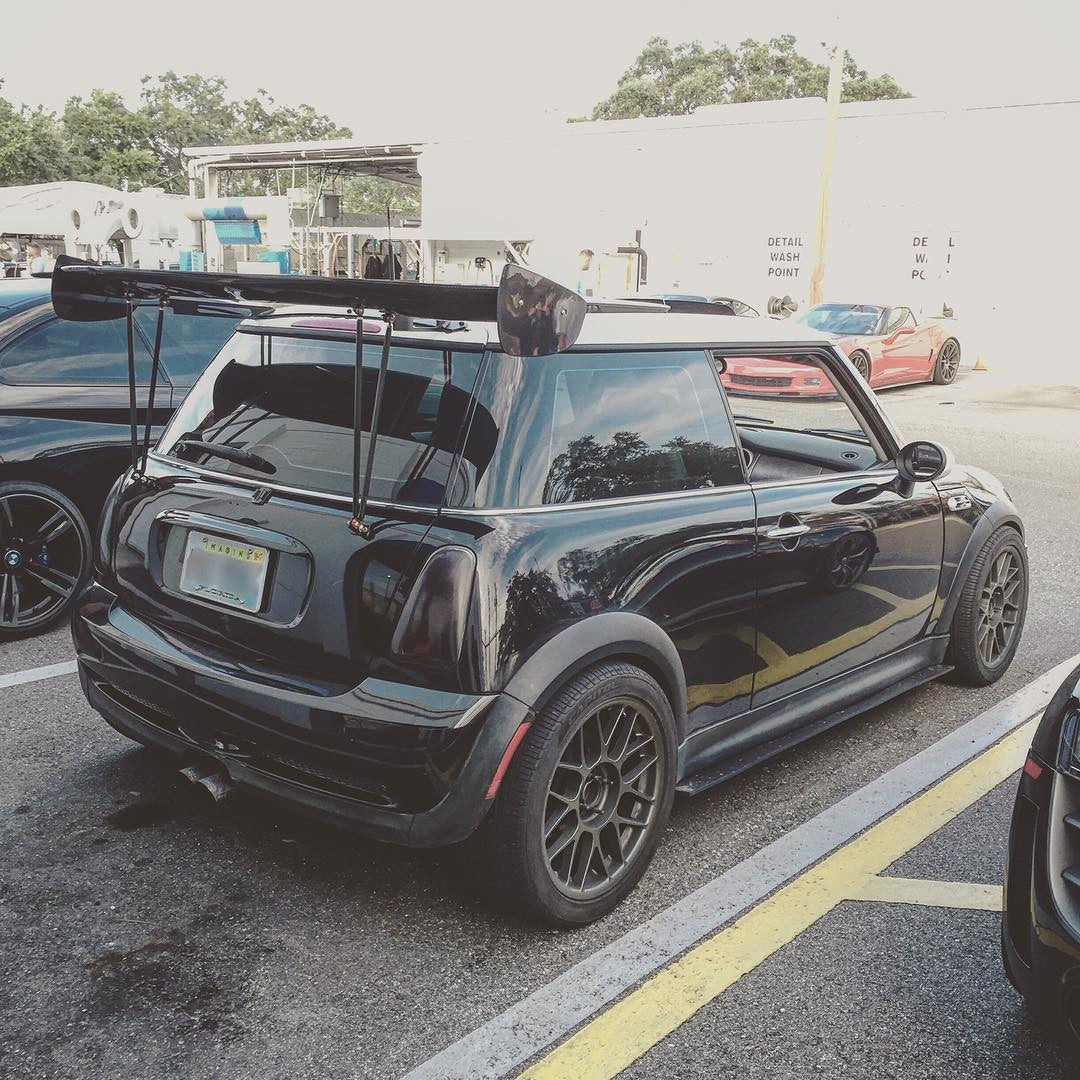Your Mini Cooper and Autocross: Where to Begin?

The Basics
Autocross is quickly becoming one of the most popular forms of motorsport worldwide. With easy accessibility and a class system that allows fair competition, it has become extremely viable to bring your daily driver out for a track day and have fun while being competitive. Usual autocross tracks include a simple cone outline in a large parking lot or even at an airport. This allows for quick and easy setup, variability, and helps to avoid damaging your car by sliding off of the track. The SCCA official rules allow for cars that are completely stock to compete in their own classes while reserving separate classes for modified vehicles.
Track Day Bro!
First and foremost, it is imperative to understand how classes work in autocross. Every car is classified and placed into a certain class where it can compete against other cars with similar power and handling characteristics. This enables an even playing field within each class. The Mini Coopers tend to do very well in stock classes, with the most popular being the D-Street class for racing your Mini Cooper S or Cooper Works model. In this class you will be racing against other similar cars such as the Subaru Impreza WRX, Acura Integra Type-R, and the Chevrolet Cobalt SS Turbo. Although there may be cars with superior power outputs compared to your Mini, the Coopers are great autocross cars due to their fantastic suspension setup and short wheelbase. A list of classes is available on the SCCA official website here: http://cdn.growassets.net/user_files/scca/downloads/000/017/206/2016-8-23_Appendix_A.pdf?1471970139
The stock classes for Mini Cooper models are as follows:
D Stock Class
R55 Clubman S/JCW
R58 Coupe S/JCW
R56/F56 Cooper JCW
R59 Roadster S/JCW
R53/R56/F56 Cooper S (all)
G Stock Class
F56 Non-S Non-JCW (BASE)
H Stock Class
R55 Clubman Base
R58 Coupe Base
R50/R56 Hatchback Base
R59 Roadster Base
Mini Coopers not allowed in autocrossing per SCCA rules: Mini Countryman, Mini Cooper S JCW (2002-2005 R53), Mini Cooper JCW GP2 (R56)

The Fun Part: Setting up your Mini Cooper to compete on the track
There are a near-infinite number of ways to fine tune any car for the track, and setting up a Mini Cooper is no exception. We will take a look at the best way to set up your R53 Mini Cooper for a successful autocross run. Although most of this information is R53 specific, much of it applies to R56 and F56 Cooper S models as well.
In stock class autocross racing, little modifying is allowed. Tires and wheels may be changed, brake lines can be upgraded, a sway bar can be added if a factory one is available, spark plugs and coils can be replaced to OEM specification, an engine can be rebored if necessary but only to the manufacturers first specified standard overbore (usually .025 over), catback exhaust and an improved air filter are also allowed. No engine computer or DME tuning is allowed.
The ultimate R53 setup guide is as follows:
- Suspension: The R53 front suspension can be very difficult to set up as there is little to no camber available, and the stock classes do not allow for camber plates. It is possible to loosen the assembly and then put it back together allowing for a slight adjustment of camber, but the amount of camber is still negligible. The lack of camber in the front also means that the R53 is very hard on tires. Expect to replace them up to twice a year if you are a frequent autocrosser. The only suspension component changes allowed are shock upgrades. Koni shocks are the usual upgrade in this category. Another worthwhile upgrade is a rear sway bar, helping to keep the rear wheels rotating together around the turns.
- Tires: The tires of choice for R53 drivers are usually a toss-up between the Kumho V7 Series and the Hoosier A7. Both tires have strengths and weaknesses but the Hoosiers are usually regarded as the slightly superior, albeit more expensive, autocross tire. With that being said the tire pressures you choose to run are extremely important when preparing your R53 for autocross use. Many drivers prefer to overfill the rear tires in order for easier rotation of the rear axle around tight turns. Experiment with running higher PSI in the rear and slightly lower in the front to see where you feel most comfortable.
- Wheels: Wheels: since wheel replacement is allowed as long as the wheel is the same width as standard and does not change the offset by more than 7mm from a standard fitment, it is often a worthwhile modification in order to shed a few pounds. Wheels such as the SSR Type-C offer Mini Cooper fitments weighing as little as 11 pounds. A different wheel also allows an increase or decrease in diameter by up to 1 inch, allowing for different tire setups for autocrossing.
- Exhaust: modifications to the exhaust are allowed but only to the section after the catalytic converter. Two of the best exhaust systems in terms of performance and weight are the Milltek and Supertrapp 2.5” adjustable systems. The Supertrapp is the lightest of the two and can be tuned by adding or removing discs to modify the power output.
- Other modifications: the only intake modifications allowed are a high flow air filter, no aftermarket piping is allowed. K&N is the usual replacement filter in this category. Brake pads are also a necessary upgrade. We recommend Hawk or similar brands. Wires and plugs can also be replaced, usually the coldest plugs and the best wires for your car should be used.

